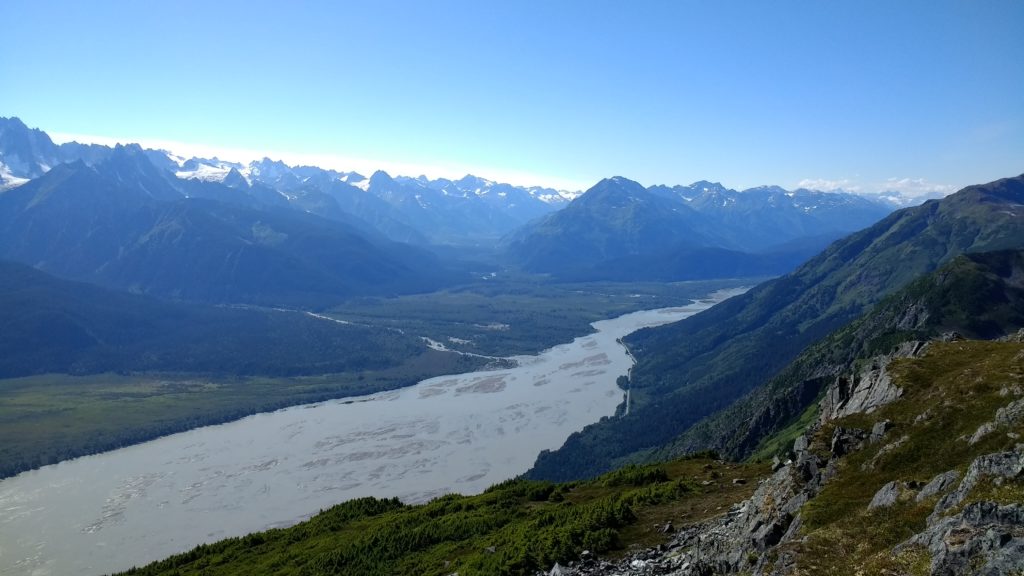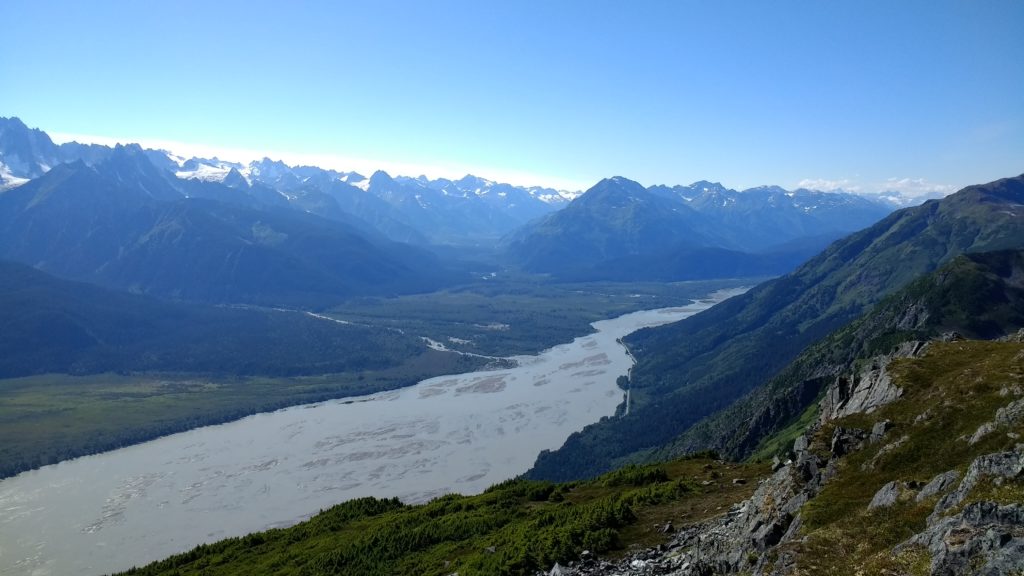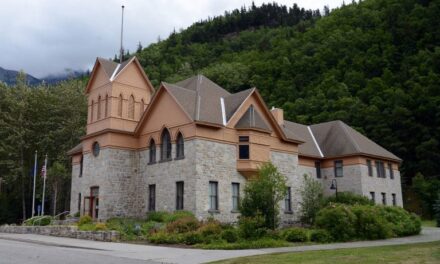
Environmental concerns include potential impacts on the Chilkat River. (Emily Files)
The United States Bureau of Land Management is facing a lawsuit centered around permitting for a mine exploration project near Haines. The Chilkat Indian Village of Klukwan and three conservation organizations filed a complaint against BLM Monday.
The Canadian company Constantine Metal Resources is conducting mineral exploration, known as the Palmer Project, about 35 miles north of Haines.
In 2016, BLM approved Constantine’s plan to expand exploration operations at the site. The agency conducted an environmental assessment and received public comments. It found potential environmental impacts to be insignificant and gave Constantine the go-ahead.
This year, the company received approval for a road extension.
The complaint claims BLM failed to consider future impacts of mine development before approving the expanded exploration plan at the Palmer Project.
Guy Archibald is the staff scientist at the Southeast Alaska Conservation Council.
“The reality is that 100 percent of full-fledged mines start as exploration projects,” says Archibald. “And it needs to be analyzed as such.”
The plaintiffs say BLM violated the National Environmental Policy Act and the Administrative Procedure Act when it approved Constantine’s plans.
SEACC, Lynn Canal Conservation, Rivers Without Borders and the Chilkat Indian Village filed the lawsuit against BLM. They’re represented by the Alaska office of Earthjustice, a nonprofit environmental law firm.
Kimberly Strong is the president of the Chilkat Indian Village. She says they expressed concern throughout the permitting process about possible negative effects of a hardrock mine on the Chilkat Watershed. Strong says the village has and continues to rely on the river.
“In our community, our ancestors have always said, ‘look around us, we’re living in a food bowl.’ When we look at the mountains, we look at sustainability of our livelihood through what we can receive from the nature around us,” says Strong.
In different sections of its environmental assessment, BLM does address NEPA requirements to look at cumulative impacts for 2014-2019, during exploration.
But the plaintiffs say concerns about environmental impacts of a potential mine development weren’t considered in the permitting process.
BLM representatives declined to comment for this report, saying the agency cannot discuss ongoing litigation.
Eric Holle is the president of Lynn Canal Conservation.
“BLM has to consider reasonably foreseeable future impacts, if the mine is developed,” says Holle. “And if they wait until discovery, then the public has very little opportunity to comment on things such as risk of acid mine drainage.”
The complaint asks for the approvals to be invalidated. Plaintiffs want the current permitting to be put on hold, and for BLM to go back and fulfill the obligations they believe were not satisfied.
Meredith Trainor is the executive director of SEACC.
“What we really want is to see the court have BLM comply with the law,” says Trainor. “And put the project on hold until a time when the BLM complies. We also want to make sure the agency goes back and fully considers the potential environmental impacts, which is what I was speaking to before. Including impacts from the actual future development of the mine, where that to come to be.”
The Chilkat Indian Village’s Strong says she wants to make one thing clear.
“We’re really not trying to hurt the economy of our community but really trying to be good stewards of the land that was entrusted to us and entrusted to the next generation,” says Strong.
Constantine did not want to comment for this story, other than to say the company is “committed to responsible mineral exploration.”









